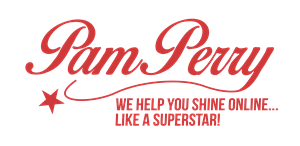“There is no such thing as a free lunch.,” said Nobel prize winning economist Milton Freidman demonstrating a powerful pricing concept. In the marketplace, if something is free, we are usually being charged for it somewhere else along the line.
Conversely, as marketers, if we are strategic in giving product away, we can more than make up for it through greater sales and higher margins.
We have all heard stories of authors and publishers succeeding by giving their books away at book fairs and street corners. However, the real power of giving something away comes from the gigantic leveraging power of the Internet.
Because the cost of digital resources is becoming so incredibly inexpensive, it is time for all of us to embrace the power of “free” to sell more books.
The Power of “Free”
The power of “free” is not a new concept. Direct mail marketers and advertising copy writers have long known the most powerful word in the English language is “free”. Businesses are just updating the concept for the Internet Age.
In Chris Anderson’s book, Free, The Future of a Radical Price, Anderson gives the basics of his concept of “free.”
His point is that the cost of storage and distribution of digital information is so inexpensive that the marginal cost of one more product is close to nothing. For example, it may cost $1,000 to create an e-book and set up a web page to give the book away, but distributing the one thousandth book costs almost nothing.
The ease of distributing digital products can lead to increased sales of non-digital information. Giving e-books away can lead to sales of speaking engagements for professional speakers and books for publishers.
Anderson tells of popular rock band Radiohead who made news when they allowed customers to set their own price, beginning at zero. Also the artist currently known as Prince gave away 2.8 million music CDs in London’s Daily Mail and then sold out 21 London shows.
“Freemium”
One giveaway concept described by Anderson, the “freemium”, gives something good way, often a partial service or partial information, and makes money when an upgraded service or product is purchased. Most of us have seen free internet services like Yahoo Mail that have better versions that cost money.
Venture capitalist Fred Wilson coined the term “freemium” in 2006 and described it as giving “your service away for free, possibly ad supported but maybe not, acquire a lot of customers very efficiently through word of mouth, referral networks, organic search marketing, etc., then offer premium priced value added services or an enhanced version of your service to your customer base.”
One of the advantages of freemiums is that this strategy works cost effectively for both large and small organizations.
Free Advice for Publishers
While giving products away offers the possibility for great creativity, there are a few rules publishers would be wise to follow.
Give away quality products. You don’t have to give it all away. It is important that what you do give away is of high quality. You don’t have to give away all the secrets to How to Bake First Place Pies, but tips to show your expertise would whet a few appetites.
Capture contact information. You are giving things away to attract attention to your product line. This in itself is important. The next step is to capture contact information so you can be proactive in keeping in touch with your customers and prospects.
Keep in touch. After establishing yourself as an expert, send a free newsletter or blog to your readers to keep them engaged. This doesn’t have to take a lot of time. Research has shown that response is usually better for short newsletters and posts.
Generate new free stuff. You are competing with thousands of pieces of information for your contacts attention. You have to keep new information coming to keep their interest.
The beauty and the challenge of these new communications techniques is that time is more of a scarce resource than money. With Web sites, newsletters, blogs, and the other internet based services so inexpensive, publishers should already have the tools necessary to make the strategy giving things away work effectively. As we all know, it is our time that is so valuable.
There may be no free lunch, but there is a marketing strategy that uses the power of “Free” that will drive paying customers to your door.

